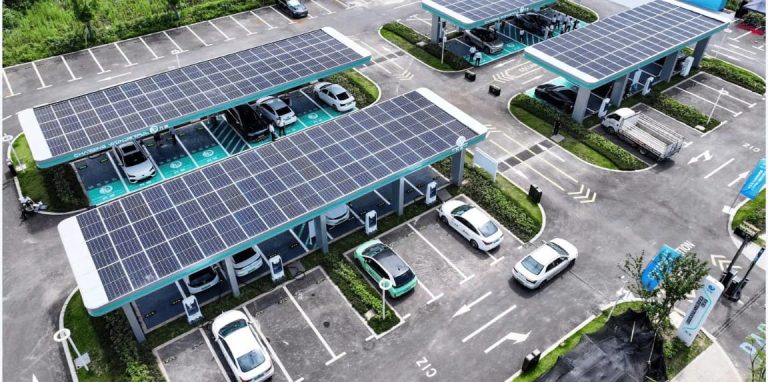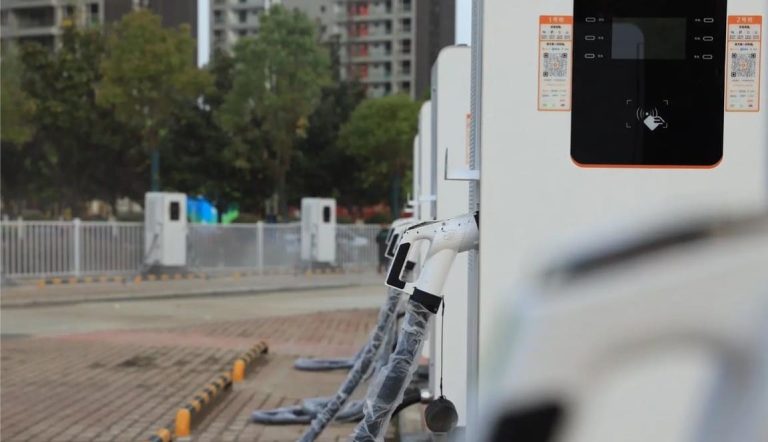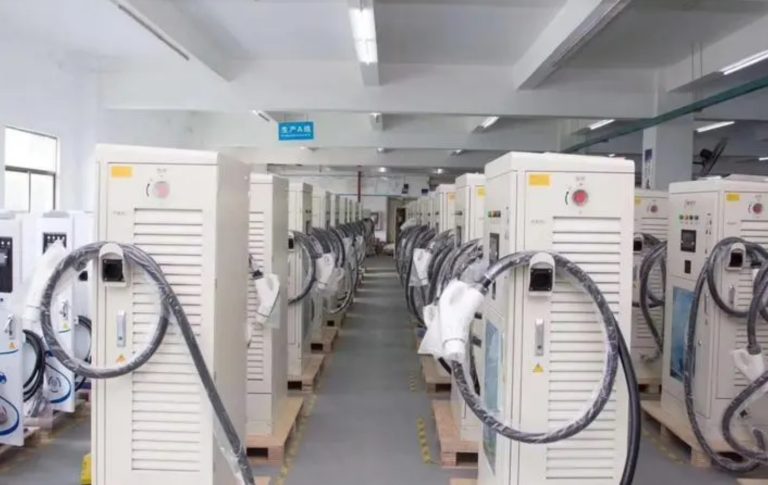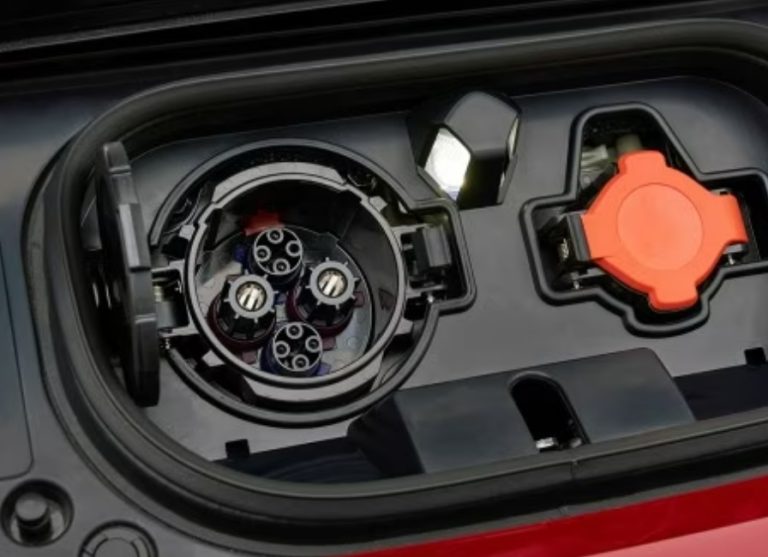Is it worth installing an EVcharger at home?
Is it worth installing an EVcharger at home? It Depends on Your Situation.
Whether installing a home EV charger is worthwhile depends entirely on your personal circumstances. Although it has many benefits in terms of convenience and long-term cost savings, it’s not the ideal choice for everyone due to issues with installation and up-front costs. Here is a thorough examination of the important factors:

The Undeniable Advantages: Convenience, Savings, and Care
The convenience that a home charger offers to everyday life is its strongest selling point. Imagine just plugging in your car overnight after finishing work and driving home. You no longer have to worry about finding public chargers, standing in line (particularly on holidays or during busy periods when lines can be excruciatingly long), or making extra trips simply to “fill up.” Range anxiety is totally eliminated for your daily commute and errands when your car starts each morning with a “full tank.” For EV owners, this smooth integration into daily life is a significant improvement in quality of life.
The possibility of large cost savings is a strong incentive in addition to convenience. Premium rates, which typically start at 1.5 RMB per kWh and can occasionally be significantly higher for fast charging, are frequently charged by public charging stations. Charging at home, on the other hand, uses your regular residential electricity rate, which normally ranges between 0.4 and 0.7 RMB per kWh. If your utility offers “time-of-use” (TOU) pricing with lower off-peak rates, typically overnight, the savings increase even further. The cost can be reduced to as little as 0.3 RMB per kWh or less by charging during these off-peak hours. When compared to using only public chargers, these savings can easily reduce your overall “fueling” expenses by 50% or more over the course of months and years of ownership, especially if you drive frequently.It’s the EV equivalent of having a gas pump in your garage selling fuel at half the price of the corner station.
Furthermore, home chargers predominantly use Level 2 (AC) charging, which operates at a slower, gentler pace than public DC fast chargers. This “slow charging” is actually beneficial for your EV’s battery health. The lower current generates less heat and reduces stress on the battery cells compared to the high-power bursts delivered by fast chargers. Consistent use of slower home charging promotes more balanced cell voltages and minimizes degradation. Experts often cite that relying primarily on slow charging can help extend the overall lifespan of your battery pack by 20-30% compared to frequent fast charging. Think of it as providing your car’s battery with a dedicated “nutritionist,” ensuring it stays healthier for longer through careful, steady energy replenishment.
Smart features and user-friendliness are also added to the experience by contemporary home chargers. The majority have Bluetooth or Wi-Fi connectivity and include related smartphone apps. This enables you to schedule charging sessions to automatically take advantage of the lowest off-peak electricity rates, remotely monitor the charger’s progress, receive notifications when the charging is finished, and even start and stop the charger from your phone. Without going into the garage, you can quickly see how much range was added overnight or see if you remembered to plug in.
The Challenges: Cost, Complexity, and Speed Limitations
However, the path to home charging bliss isn’t without its obstacles. The initial installation cost is the biggest obstacle. Buying the charging device itself is only the first step. The price of a professional installation must also be taken into account. Generally speaking, a basic installation (within about 30 meters of your electrical panel) costs 1,500 to 2,000 RMB. If your assigned parking space is far from the main electrical service to your house, this can rise dramatically, necessitating thicker, longer, and more costly cabling. If trenching is necessary to run conduit or if your home’s electrical panel needs to be upgraded to handle the additional load, additional expenses might result. This initial investment must be carefully weighed against the long-term electricity savings for renters or those on a limited budget.
Perhaps an even bigger hurdle than cost can be the installation complexity and permissions, particularly in older residential buildings (“old neighborhoods” or apartment complexes). The main challenges often involve electrical capacity: Many older buildings weren’t designed with the significant additional electrical demand of EV charging in mind. Your unit or the building’s main service might simply lack the spare capacity to add a charger without costly upgrades to transformers or wiring. Even if capacity exists, you usually need formal approval. This involves navigating potentially complex negotiations with your property management (or homeowners association) and sometimes even obtaining signatures from neighbors, especially if the installation involves common areas or could potentially impact shared resources. The process can be time-consuming and frustrating. Furthermore, having a dedicated, fixed parking spot is an absolute prerequisite. Without a guaranteed place to install and use the charger consistently, the project is a non-starter.
Last but not least, it’s critical to recognize the intrinsic speed limit in comparison to public options. A standard home Level 2 charger is much slower than public DC fast chargers, even though it is more than sufficient for overnight charging to refuel a normal daily commute (adding 20–50 miles of range per hour). Waiting 4–8 hours for a home charge isn’t practical if you have to drive a long distance on short notice and your battery is low. Although home charging is excellent for regular “refueling,” it cannot take the place of sporadic access to fast charging for long trips or emergencies. Owners who only use home charging should be mindful of this restriction and make appropriate plans.
Who Benefits Most? Key Usage Scenarios
Given these pros and cons, installing a home charger delivers the most value in specific situations:
- High Daily Drivers: If you use your EV extensively every day – for a long commute, frequent errands, or rideshare driving – the convenience of guaranteed overnight charging is invaluable. You maximize the benefit of starting each day with a full charge and reap the largest cost savings over time due to high electricity consumption shifted to cheap home rates.
- Cost-Conscious Owners: For drivers focused on minimizing long-term operating expenses, the significant per-kWh savings of home charging versus public charging make the upfront investment pay off faster. The longer you own the car and the more you drive, the greater the financial return.
- Homeowners with Suitable Infrastructure: The ideal candidate owns their home (or has landlord permission) and has a dedicated off-street parking spot (garage or driveway) reasonably close to the main electrical panel. This eliminates the permission hurdles common in apartments and simplifies installation.
- Those with Favorable Local Policies: Some cities or utilities offer incentives to ease the burden. For example, Shanghai has provided subsidies (around 300 RMB per unit for AC chargers). Researching local incentives can significantly improve the cost-benefit equation.
For Those Unable to Install: Practical Alternatives
If installing a permanent home charger isn’t possible due to renting, unsuitable parking, prohibitive costs, or insurmountable permission issues, practical alternatives exist:
- Public Charging Networks: Relying on the expanding network of public chargers (fast and slow) is the primary alternative. While potentially less convenient and more expensive per kWh, apps make finding chargers easier. This requires more planning and time investment.
- Portable “Granny” Chargers: Every EV comes with a basic portable charger (often called a “granny charger” or Electric Vehicle Supply Equipment – EVSE Level 1). This plugs into a standard household 120V (or 220V in many regions) outlet. While extremely slow (adding only 3-5 miles of range per hour), it provides a crucial emergency or top-up option, especially for those without dedicated home charging. It’s ideal for plugging in at a relative’s house or a destination with an accessible outdoor outlet. It can serve as a primary method only for drivers with very low daily mileage.
The Verdict: Weigh Your Specifics Carefully
So, is installing a home EV charger worth it? The answer remains: It depends. Carefully evaluate your situation against the key factors:
- Do you have a dedicated parking spot? (Essential)
- Does your home’s electrical system have the capacity? (Check with an electrician)
- Can you obtain necessary permissions? (From landlord, HOA, property management, neighbors if needed)
- Is the upfront cost manageable within your budget? (Factor in unit + installation, potential upgrades)
- How much do you drive daily? (High daily mileage maximizes benefits)
- How sensitive are you to long-term charging costs? (Significant savings potential exists)
- Do you value the ultimate convenience? (Priceless for many)
If you have a fixed parking spot, adequate electrical capacity, necessary permissions, and drive frequently enough to justify the upfront cost, installing a home EV charger is highly recommended. The unparalleled convenience, substantial long-term cost savings, and benefits to your battery’s health create a compelling value proposition. It transforms the EV ownership experience, making it effortless and economical.
Conversely, if you are a renter, lack dedicated parking, face prohibitively expensive installation due to electrical upgrades or distance, drive very infrequently, or primarily rely on public fast charging due to your lifestyle, the investment in a permanent home charger may be difficult to justify. In these cases, leveraging public charging networks and the included portable charger is a more practical and flexible approach.
The choice ultimately comes down to matching the technology to your particular living arrangement, driving habits, and financial constraints. You can decide whether bringing the “gas station” home is the best course of action for your electric journey by honestly weighing the benefits against the possible drawbacks mentioned above.






































































































































